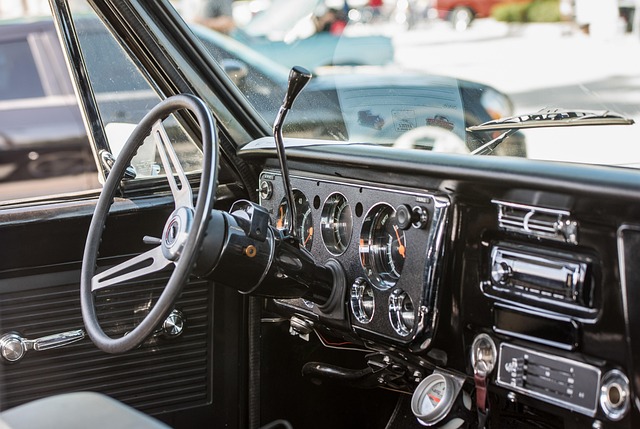Looking to register your car in California? This comprehensive guide breaks down the process step-by-step, ensuring a smooth experience. From understanding essential requirements to gathering vital documents, you’ll learn how to navigate the process efficiently. Key aspects include verifying your vehicle’s VIN (using a reliable vin verifier) and completing the official application form. We also detail the fees involved, providing you with all the information needed to register your car in California successfully.
- Understand California Car Registration Requirements
- Gather Necessary Documents for Car Registration
- How to Verify a Vehicle's VIN (Vehicle Identification Number)
- Complete and Submit the California Car Registration Application
- Pay Car Registration Fees in California
Understand California Car Registration Requirements

Before diving into the registration process, it’s crucial to understand California’s car registration requirements. In this state, registering your vehicle involves several key steps and documents. The first step is ensuring your car meets all safety and emissions standards set by the California Department of Motor Vehicles (DMV). This includes a successful inspection that checks lights, brakes, tires, and other critical components.
Additionally, every vehicle in California must have a valid registration certificate and display a current license plate. The Vehicle Identification Number (VIN) is a vital piece of information used for identification and verification purposes. Many Californians opt for convenient mobile VIN verification or inspection services to streamline the process. These services, often provided by third-party apps, allow you to validate your vehicle’s history and specifications from the comfort of your home or on the go, making registration easier than ever.
Gather Necessary Documents for Car Registration

Before you start the registration process, ensure you have all the required documents. The California Department of Motor Vehicles (DMV) requires several key pieces of information for car registration, including proof of ownership, which can be established with a valid vehicle registration from the previous state or country where the car was registered. Additionally, you’ll need to provide identification, such as a driver’s license or state ID card.
A crucial document to have on hand is your vehicle’s Vehicle Identification Number (VIN) verifier, often referred to as a VIN inspection report. You can obtain this through a mobile vin verification service, which provides quick and convenient access to your car’s history, ensuring all documentation is in order. This step is essential, as the DMV will verify the vehicle’s authenticity and identify any potential issues that could delay registration.
How to Verify a Vehicle's VIN (Vehicle Identification Number)

To verify a Vehicle Identification Number (VIN), an essential step in the car registration process in California, you’ll need to ensure its accuracy and authenticity. Start by locating the VIN on the vehicle itself—typically found on a label attached to the driver’s side door frame or engine hood. It’s a 17-character alphanumeric code unique to each car.
For added assurance, consider using a mobile vin verification service. These apps or online tools allow for easy and quick checks against national databases, ensuring the VIN is genuine and free from any fraudulent activity. Alternatively, you can conduct a VIN inspection at a California Department of Motor Vehicles (DMV) office. This process verifies the vehicle’s history, including its make, model, year, and potential recall issues.
Complete and Submit the California Car Registration Application

To register your car in California, the first step is to complete and submit the California Car Registration Application. This form requires detailed information about your vehicle, including its make, model, year, and unique Vehicle Identification Number (VIN). The VIN is a crucial piece of data that serves as a digital fingerprint for your car, so ensure it’s accurately recorded. You can obtain this number from your vehicle’s registration documents or check the driver-side door jamb for most cars.
Once you’ve filled out the application, submit it along with the required fees to the California Department of Motor Vehicles (DMV). You can do this in person at a local DMV office, by mail, or online if eligible. For added convenience and speed, consider utilizing mobile vin verification services that offer remote inspection and registration options, sometimes referred to as mobile vin inspection. These services can help streamline the process by allowing you to verify your VIN and complete the registration from the comfort of your home.
Pay Car Registration Fees in California

In California, paying car registration fees is a straightforward process that involves several steps. Once you’ve gathered your necessary documents and passed the vehicle inspection, it’s time to head to the Department of Motor Vehicles (DMV) or use their online services to complete the registration. The fees vary based on the type of vehicle and its age, but you can expect to pay a base fee plus taxes and assessments. One crucial tool that aids in this process is a vin verifier, which ensures your vehicle’s unique identification number (VIN) is accurate and matches the records.
For convenience, many California residents opt for the mobile vin verification or mobile vin inspection services, allowing them to complete these checks remotely before visiting the DMV. This approach saves time and effort, ensuring a smoother registration process. Remember to keep your vehicle’s documentation up-to-date, as it’s essential for future interactions with the DMV and maintains the legality of your vehicle on California’s roads.
Registering a car in California involves understanding specific requirements, gathering essential documents, verifying the Vehicle Identification Number (VIN) using a reliable VIN verifier, completing an application, and paying associated fees. By adhering to these steps and ensuring all necessary information is accurate, you can successfully navigate the process, making your vehicle roadworthy and legally compliant in the Golden State.
